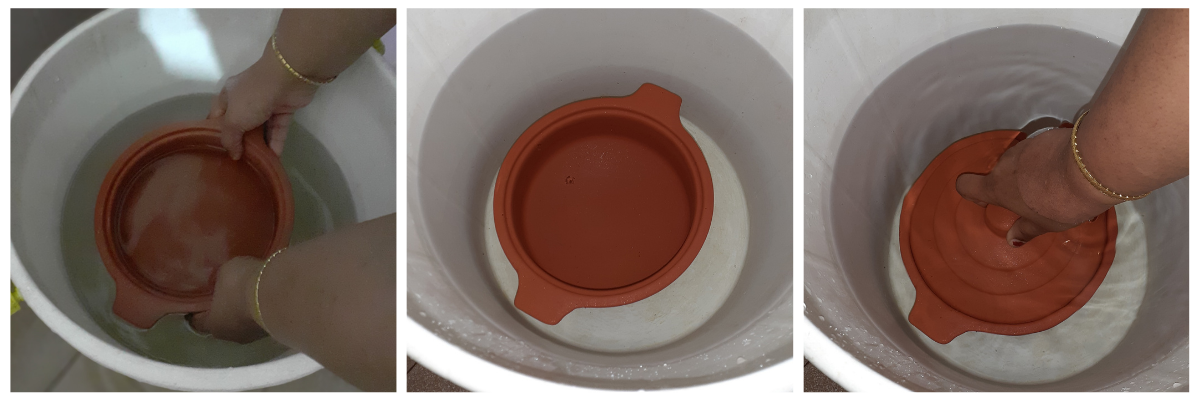
How to season Clay Pots in 5 simple steps

5 simple Steps for seasoning clay pots for cooking
The New Year is here and to put into practice one of your top resolutions, you’ve decided to switch to clay pot cooking - one of the healthiest cooking methods!
Before you begin, you need to season your clay pots. Clay pot seasoning is an important process, one that you cannot afford to miss.
Why is seasoning clay cookware important?
The process of seasoning clay cookware is important as it readies a pot to undergo the cooking process providing maximum benefits with negligible or no hindrances. Certain other specific benefits are highlighted below.
- Unglazed clay cookware if used immediately for cooking, without seasoning it first, would render a muddy after-taste in the food.
- Allowing the clay pot utensils to go through the seasoning process ensures that it can better withstand the heat generated when cooking, avoid developing cracks, thus having longer durability.
How to season clay cookware?
Clay or earthenware is of different kinds, unglazed, glazed, or partially glazed. Regardless of the type of earthen utensils you buy, some kind of seasoning process is a must. The details given below are for seasoning unglazed clay cookware which is made from pure all-natural clay and does not contain any glazes.
Seasoning clay pots for cooking does take a bit of time and effort but is a beneficial process.
Here are 5 easy steps to season your clay pot utensils:
Step 1: Wash Thoroughly
Wash the clay pot thoroughly under running water. Make sure to wash the lid and the inside of the pot well to get rid of residual mud or impurities. This process also helps to lessen the clay odor which is quite strong.

Step 2: Soak Overnight
Fill the pot with water, and soak it overnight (including the lid) in a bucket of clean water. Ensure that the pot and lid are fully submerged in water. If you pay close attention, you will hear a mild fizz or sizzling sound as the pot is soaking. This is because the pot is porous (has minute holes) and hence makes this sound when it comes in contact with water for the first time.

|
Step 3: Apply Oil & Sun Dry
The next day, empty the water and dry the pot in the sun. After it dries completely, rub and apply oil (olive oil or any vegetable oil) all over, on the inside and exterior of the pot and lid. Alternatively, you can also rub a clove of garlic on the pot. Keep it out in the sun again, and allow it to dry for a few hours until all the oil is completely absorbed.

Step 4: Heat Gradually
Place the pot on your gas on a low flame, cover lightly with the lid, and gradually bring the liquid to a boil. Turn off the flame and keep the pot aside to cool completely. Once cool discard the starch water.

Step 5: Clean & Dry Gently
Rinse the pot, clean it well using a coconut scrubber. However, ensure not to use any cleaning liquid or detergent as it could leech into the tiny pores of the pot. Gently pat dry with a soft kitchen towel. And voila, your pot is now ready for cooking!
Click here to check out Kulture Street's Earthenware Collection

Mandy
I had the same question/comment that Andi had. I am actually at the end of step 3. Guess I’ll just boil some water and begin using the pot. My nephew said it makes good eggs. We’ll see.
Andi
I feel like you left out some info between steps 3 & 4?
Gwynn
I inherited my unglazed, Terra Cotta Pot from my deceased Mother-in-law
Thank you for sharing this helpful info. (about cleaning & seasoning), as I’m sure it’s never been used before.
Not sure how much I’ll use it, but I want to experience the process.